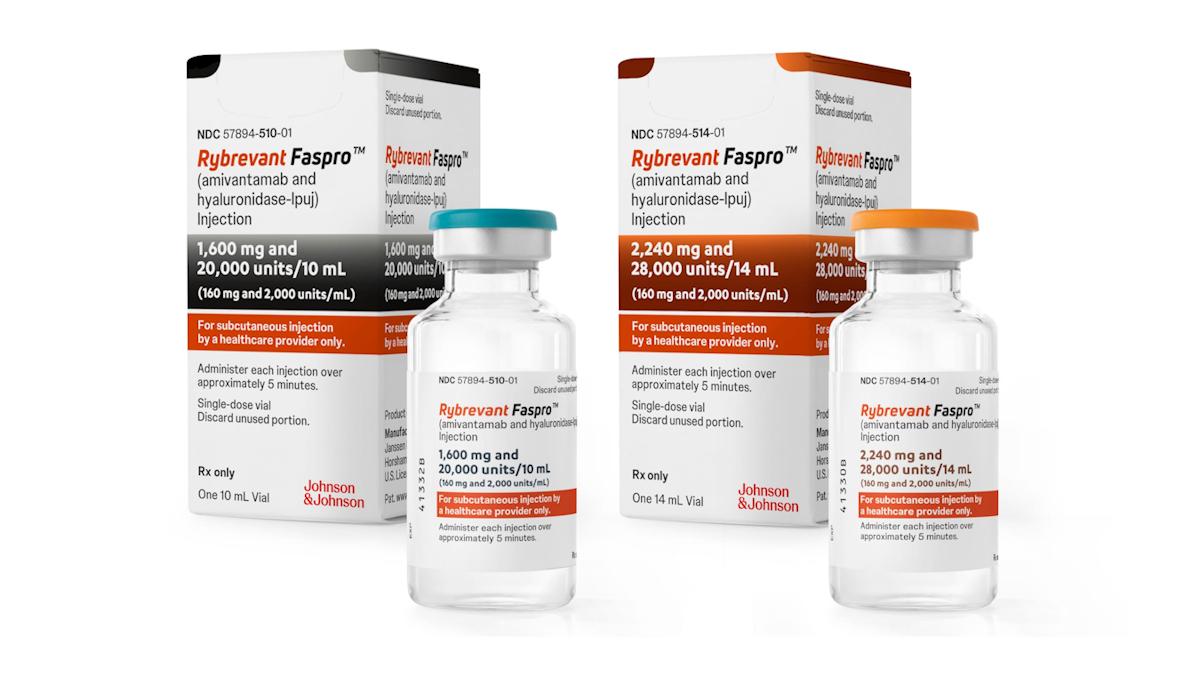J&J nets another key approval for blockbuster hope Rybrevant

Johnson & Johnson's target of $5 billion in sales for its EGFRxMET bispecific antibody Rybrevant has moved a step closer, after a new FDA approval in non-small cell lung cancer (NSCLC).
Rybrevant (amivantamab) has been cleared in combination with chemotherapy for patients with locally advanced or metastatic NSCLC with EGFR exon 19 deletions or L858R mutations who have previously been treated with an EGFR inhibitor.
The new indication follows two FDA approvals since the start of the year as a first-line treatment for EGFR-mutated NSCLC, firstly in combination with chemo and secondly as a dual regimen with J&J's companion EGFR inhibitor Lazcluze (lazertinib). The drug first came to the market in 2021 as a post-chemo treatment for NSCLC patients with EGFR exon 20 mutations.
The new green light comes on the back of the MARIPOSA-2 trial date – reported a few days ago at the ESMO cancer conference – which looked at the drug in combination with carboplatin and pemetrexed in patients with the more common EGFR exon 19 deletions or L858R mutations, comparing it to the chemo regimen used alone.
The results revealed that 50% of patients treated with Rybrevant were still alive at 18 months, compared to 40% of those receiving chemo alone, while the median progression-free survival (PFS) was 6.3 months and 4.2 months, respectively.
There was also evidence of an overall survival benefit with J&J's drug – reaching 17.7 months compared to 14.3 months in the control group after 18 months of follow-up – although the difference has not yet reached statistical significance.
The five-year survival rate is less than 20% for all people with advanced EGFR-mutated NSCLC, in part because resistance mutations tend to occur after EGFR inhibitor therapy, so there is a need for additional treatment options in both the first- and later-line settings.
Rybrevant and chemo can work in patients who have developed resistance to so-called third-generation EGFR inhibitors used for first-line treatment like AstraZeneca's Tagrisso (osimertinib), currently the leading drug in the class with sales of $3.2 billion in the first half of this year.
At ESMO, Dr Natasha Leighl from the Princess Margaret Cancer Centre in Toronto, Canada, said the results "continue to strengthen the position of amivantamab plus chemotherapy as the most effective regimen to date after disease progression on osimertinib, outperforming the previous standard of platinum chemotherapy alone."
She noted, however, that the management of side effects, and notably skin toxicity, will need to improve once the regimen comes into clinical use.
J&J's high expectations for Rybrevant are driven mainly by its August approval with Lazcluze, which outperformed Tagrisso in the head-to-head MARIPOSA study, but second-line use will be an important part of its push towards blockbuster sales.
"Patients need and deserve effective, targeted approaches across all lines of therapy," said J&J's head of solid tumour clinical development Dr Kiran Patel.
"With Rybrevant-based regimens, we are bringing potential new standards of care to the nearly 30,000 patients diagnosed with EGFR-mutated NSCLC in the US each year," he added.












